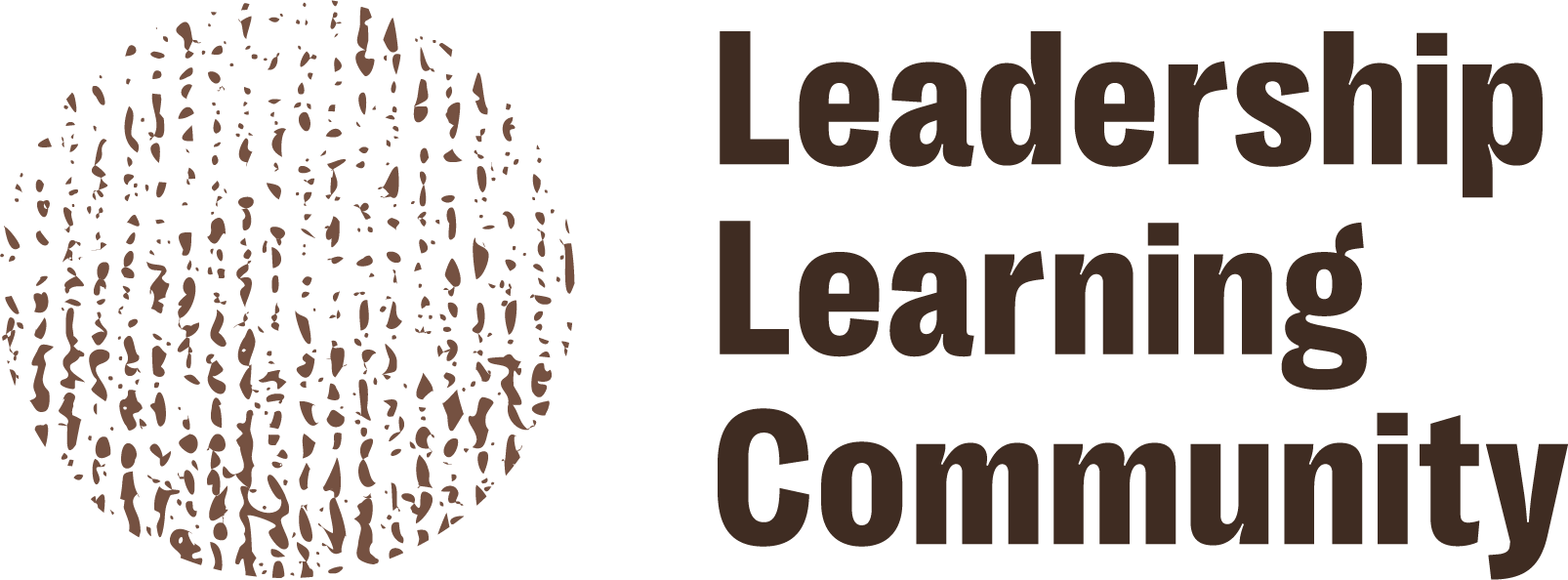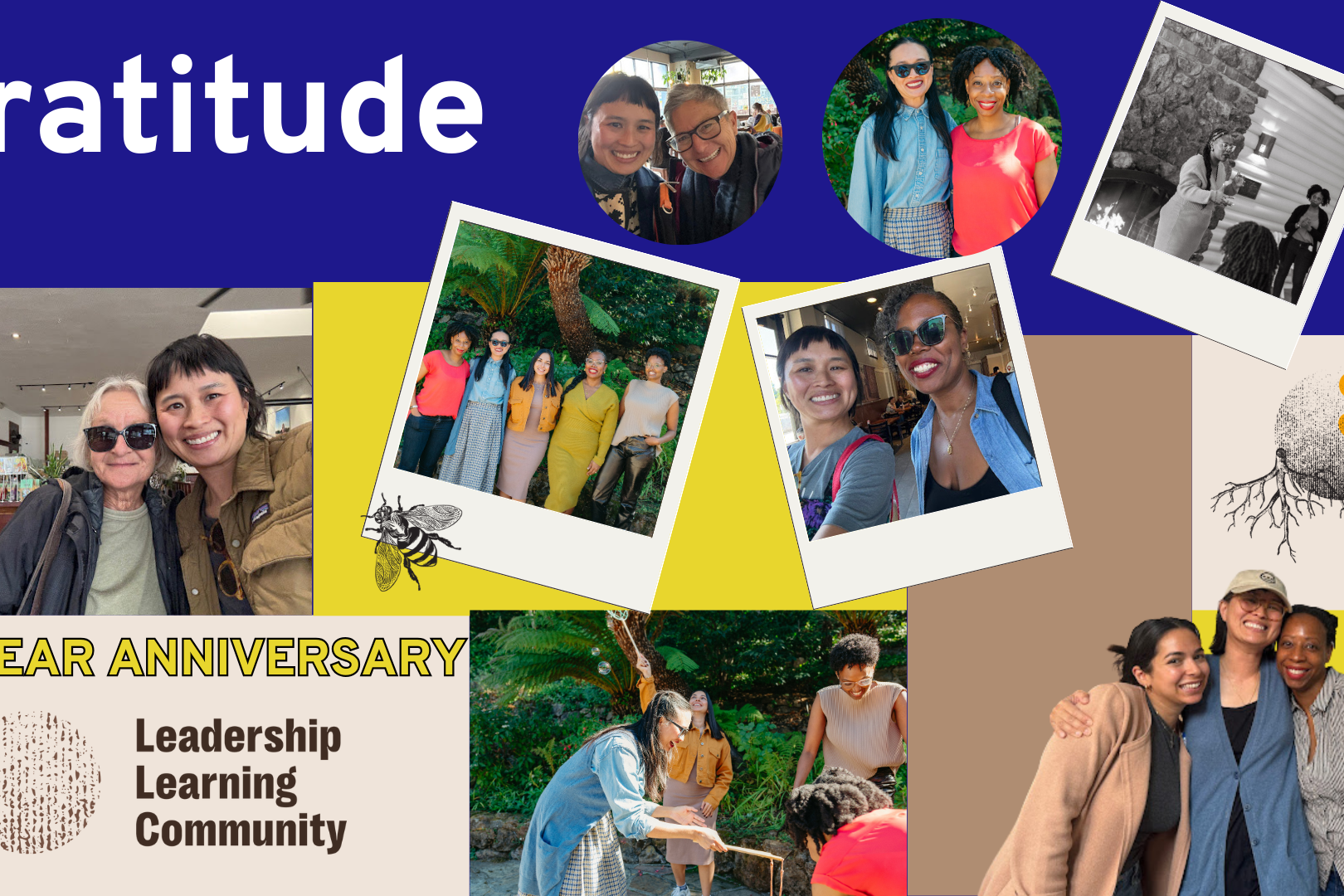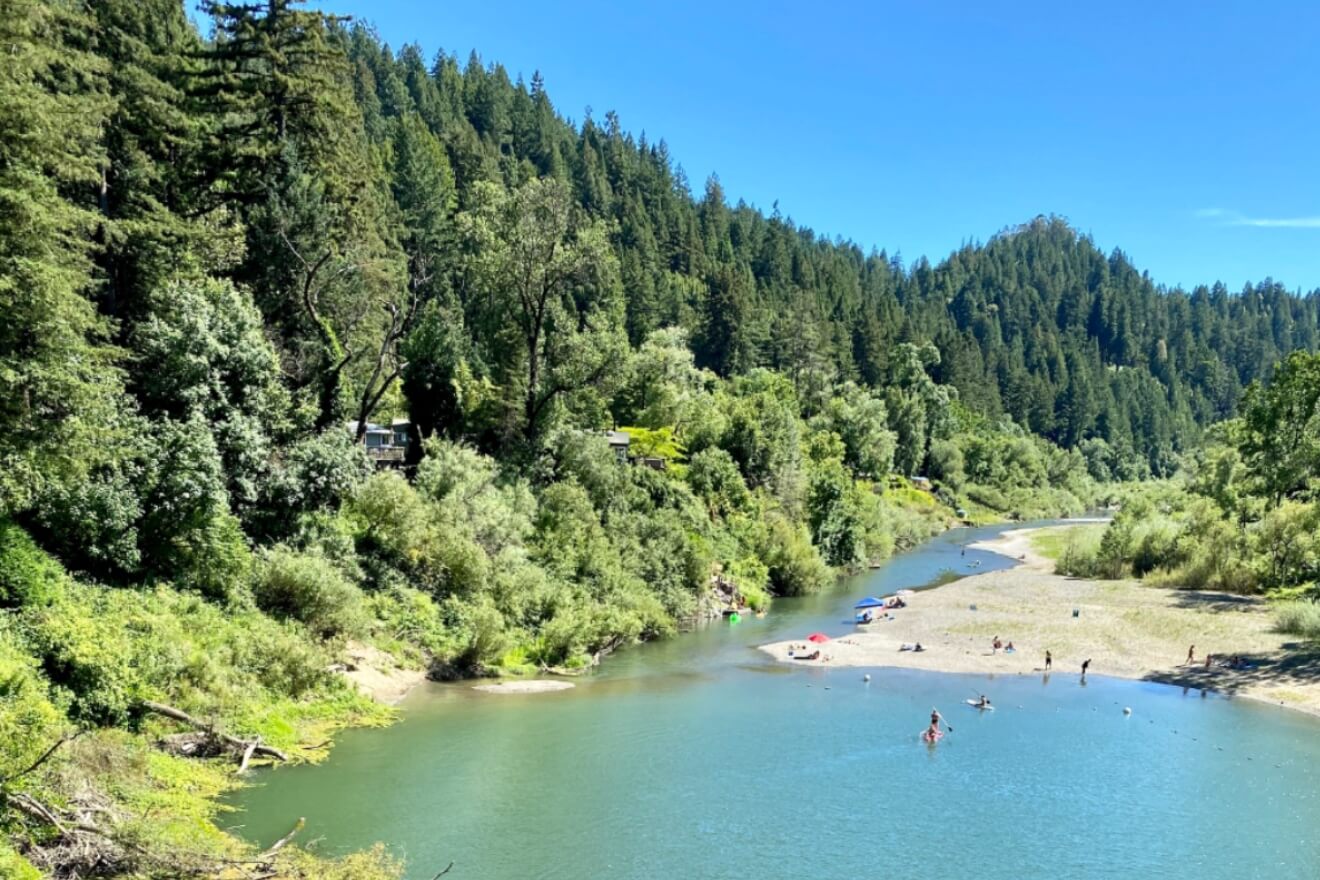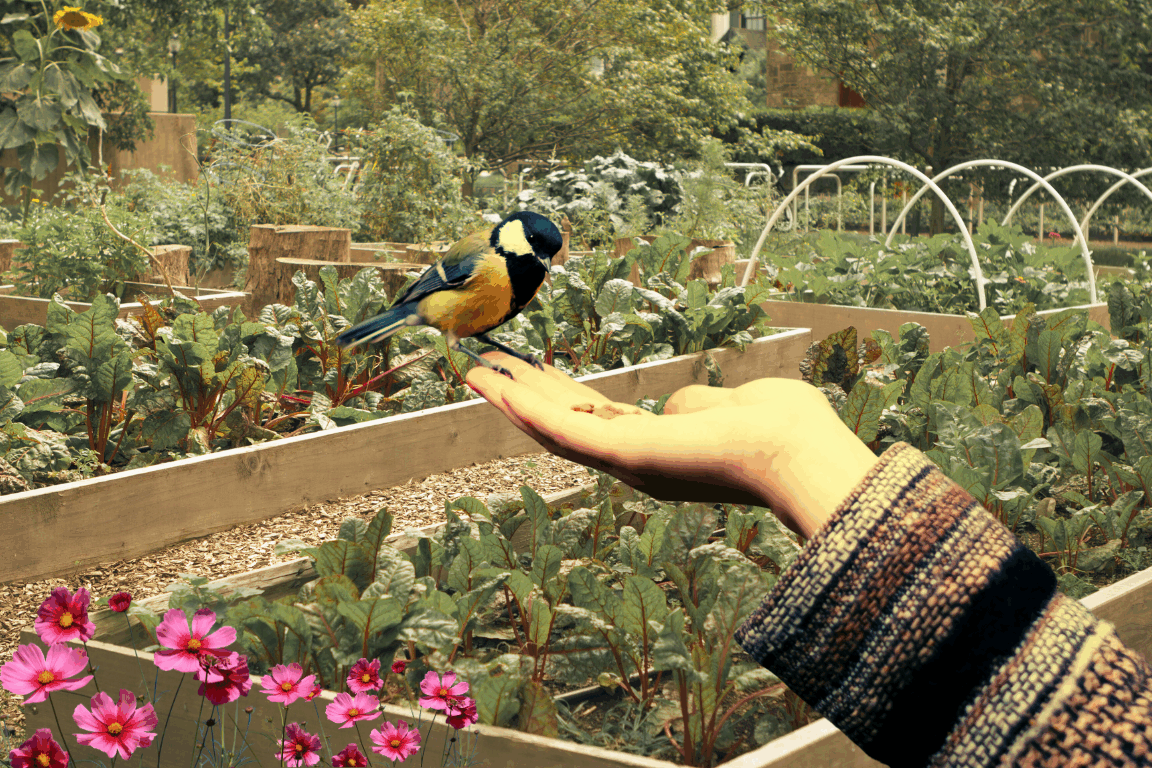At the end of May, we were able to convene in Santa Fe as part of our in-person gathering of the Liberatory Leadership Community of Practice. For the last seven months, we’ve been convening to think about the tools, processes, and capacities needed to practice liberatory leadership and support liberatory leaders. Some of the conversations we’ve had include liberatory operations, rest and distributed leadership, generative conflict, and most recently, trust and relationship building as core to healthy and dynamic leadership practices.
Our conversations have often been anchored in the Liberatory Leadership Partnership’s working definition, but as our conversations have grown and deepened, what has also surfaced is a serious reckoning with dominant habits in nonprofits and all the ways that philanthropy could stand to be not just more equitable, but more risk-tolerant, seeking to invest in smaller organizations doing the heart-forward work of organizing and orienting us towards a more whole, more just, and more loving future.
At LLC, we have an organizational metaphor about being an oasis in the middle of the desert. What that has looked like is deepening a culture of care and repair by being intentional, slowing down, building trust, and asking for help as we work towards shared goals.
I’ve often imagined the desert as a stand-in for the “nonprofit industrial complex,” a work culture that prioritizes labor extraction and martyrdom in service to institutional goals, which reproduce totalizing narratives of endless growth without reflection or meaningful pathways to honor the rhythms of the natural world. I am thankful to Ditra Edwards, Executive Director of SistaFire RI, who reminded me that the desert is an important part of the natural world and that ecologically, not only do oases exist within the desert, but they are, in fact, made possible by them.
I forget, sometimes, that as organizers and movement leaders working in the heart of an empire, we are as much shaped by the values we hold, the people we love, and the world we are working towards as much as we are by the inequities we loathe and the policies we are working to dismantle. By collapsing all deserts into a singular narrative that reduced them to their most anti-human qualities, I robbed them of their capacity to surprise me. I forgot that some deserts are mountainous, others have salt flats, and still others have near-tropical climates.
While deserts may not be fertile in quite the same way that fields are fertile, they have their own unique offerings. And while they may not have water, they have an abundance of drought-hardy medicinal plants and shelter animals who have adapted to survive in the heat. I have often wondered why so much of our organizing has taken place within nonprofits. I imagine they have, or have had, much to offer us in terms of organizational structure, flexibility, and collaboration. As much as traditional nonprofits could stand to be transformed, the oases within and around them, the ones made possible by a certain level of institutional obsolescence, have been sites of some of the most radical organizing, fundraising, and future visioning I’ve witnessed in recent years.
The brilliant conversations among our participants about the future of philanthropy, the demand and desire for more liberatory practices in our organizations, and the need for a bridge between the most radical possibilities of what our organizations can do and the tools, processes, and structures needed for that change to be sustainable and just, let me know that we can take what is useful from traditional institutions and abandon them for our own visions.
Gathering in the desert with seven of the most talented, visionary, and politically astute Black, Latinx, Desi, Muslim, and southern women-identified leaders was nourishing, spacious, and rejuvenating. We are thankful to be able to do that from within an organizational structure that makes space for radical hospitality and learning. We hope to continue to honor the labor, the dreaming, the organizing, and the heart work that goes into practicing a different kind of leadership so that we may have organizations rooted in trust and care with the necessary infrastructure to labor towards a collective vision of liberation.
Some questions that have remained with me:
- How can we honor the desert’s offerings without comparing it to the ocean or fertile soil?
- What can we learn from the desert that makes the oasis possible and necessary?
- What does the non-profit organizational model offer us in terms of flexibility, dreaming, and collaboration?
- How can we learn from what serves us and jettison or transform what doesn’t?
What did we learn?
- Connection is the very foundation for a practicing community. We began our virtual gatherings by meeting 1:1 with every participant to learn where they wanted to grow in practice, who in the field had their attention, and what organizational questions they were sitting with. To live into our values of trust and centering relationships, we pivoted from an entirely virtual gathering to a virtual gathering with an in-person touch point, and that shift deepened our relationships. Gathering over food, by water, and in nature taught us that centering care and leading with and alongside is key to holding spaces of deep generosity and reciprocity.
- Liberatory leadership depends on inner healing, generational conversations, and a willingness to reach out to each other for more understanding rather than rooting in shame and blame about organizational dysfunction. Naming dynamic tensions while laughing over food and art helped us process and move through difficult conversations.
- Liberatory Evaluations and Learning capture have to be embedded from the very beginning of programs. Our research and liberatory learning extraordinaire, Catherine Labiran, attended most of our virtual gatherings and spent 1-1 time talking to each of the cohort participants before attending our gathering as both a participant and workshop facilitator. Her presence enlivened conversations, strengthened participants’ understanding of liberatory evaluations as a tool in their toolbox, and helped us model transparency and collaboration as we worked to weave the story of our community of practice.
- Art has a place in all of our movements, but it especially has a place in our gatherings, community building, strategy meetings, and leadership development. Art invites us to connect deeply to our inner self. It serves as a tool for visioning and communication, and it allows us to connect with each other. In our gathering, we were able to use collage and visual storytelling through drawing and painting to connect the dots between each of our participants’ leadership journeys and their visions for a liberatory future.
- We need more spaces to explore liberatory leadership. Meetings don’t always have to take place in hotel meeting rooms. You can bring pillows, incorporate somatic exercise and art, allow time in nature, go on walks, and have deep discussions about white supremacy by the pool.
- Our gathering was full of femme and maternal energy. There was a culture of reciprocity, care, and nurture and a leadership lineage that made room for the role that tenderness and carework have in our lives and in our movements.
- It is important to ground in the place and honor the Indigenous community that was displaced to make your gathering possible. For us, that meant getting grounded in the fecund nature of the southwest desert, incorporating poetry from local indigenous poets, and visiting the Botanical Gardens to Learn about the plants and trees native to this land.
What are our participants up to?
- Reproductive Justice: HEART launched a collective call to action in June regarding Reproductive Justice in Palestine. Sign up at the link and get educated on ways you can support the movement!
- Leadership Development: Transformative Leaders for Change wrapped up its 2024 fellowship retreat with its 2023 cohort of movement leaders in the Denver area. Read Co-Directors Neha Mahajan and Felicia Griffin’s NPQ article: The Call of Leadership Now: BIPOC Leaders in a Syndemic Era.
- Art and Liberation: Intelligent Mischief’s Aisha Shillingford wrapped up their stay as part of the 2024 Sovereignty Arts Residency at the Santa Fe Institute of Arts. Check out the cool mural they were able to install in Santa Fe! If you’re looking to install a mural as a part of a community project, reach out to Intelligent Mischief.
- Pride and Reproductive Justice: Sista Fire RI led the Dyke and Trans people of color march in Providence, Rhode Island this June in celebration of Pride Month. Check out their Instagram to keep up with all the happenings!
- Organizing against Islamophobia: Muslims for Just Futures has launched “the first community memo and cross-movement endorsed platform,” which makes recommendations for a white house strategy that works to dismantle structural Islamophobia. Share and sign on to support the work of Muslim organizers.
- Community Policing and Black Youth Advocacy: June 2024 was the 4th anniversary of the George Floyd Police-Free Resolution. Read Executive Director Malaika Parker’s OP-ED in Yes Magazine about how the Black Organizing Project and the Oakland community removed police officers from the Oakland Unified School District.
What resources can we share?
- Leading with love: On the culture of care and repair at LLC by Iman Mills Gordon
- Meeting the Leadership Moment – Aurora Commons
- Mosaic & Mirrors: Insights and in Feminist Co-Leadership
- Colibrì Collaborative: Towards Liberation: A Guide for connecting with a Culture of lIberation
- The Moon that Turns You Back by Hala Alyan, Palestinian psychiatrist and poet
- Calling In and Up
- Creating a Liberated Zone

Related Posts
December 15, 2025
LLC’s 2025 Celebrations
July 21, 2025




